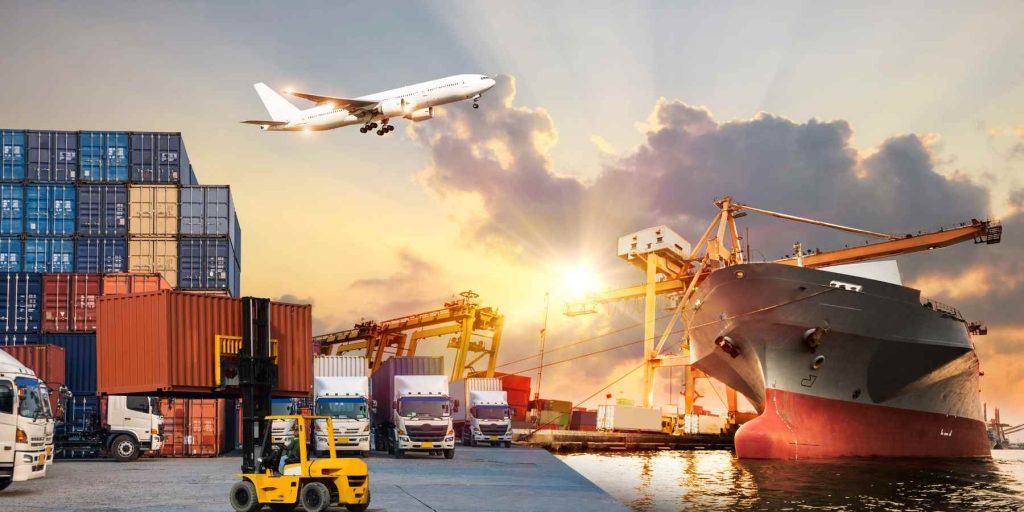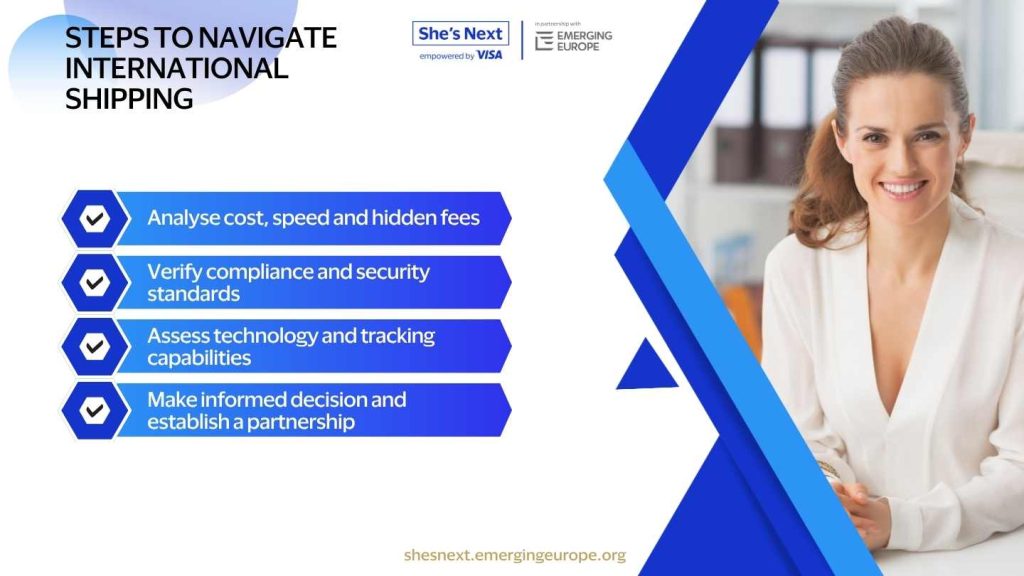
Navigating international shipping – Cost, compliance and choosing the best logistics partner
In Part 1, we laid the groundwork: understanding your shipping needs and exploring logistics provider options. Now it’s time to go deeper.
From hidden costs to compliance standards and tech integration, smart logistics decisions can mean the difference between seamless global growth and costly delays.
This article walks you through the final steps in choosing the right logistics partner for your international expansion.
Analyse cost, speed and hidden fees
Shipping quotes often look straightforward—until the hidden charges kick in.
Break down the total cost:
> Freight fees
> Customs clearance charges
> Fuel surcharges
> Storage costs
> Last-mile delivery expenses
Evaluate what matters more:
> If you’re sending small-batch skincare to customers in Denmark, speed might boost customer satisfaction—justifying air freight.
> But if you’re shipping textiles in bulk from Georgia to South Korea, sea freight could offer major savings.
Pro tip: Ask for a detailed quote including all potential surcharges before signing anything.
Verify compliance and security standards
A single missing document can hold your shipment at customs for weeks. Avoid it.
Make sure your provider is compliant:
> Do they follow international customs regulations for your product category?
> Are they familiar with certifications like CE marking (for electronics) or ISO standards?
> Can they manage required documentation for complex items like food, cosmetics, or electronics?

Look into insurance options:
Cargo insurance protects your goods from loss, theft, or damage—especially useful for long-haul shipments to markets like North America or Japan.
Assess technology and tracking capabilities
You shouldn’t have to guess where your shipment is.
Look for real-time tracking with automatic updates—your customers will appreciate it too.
Check platform compatibility: Will the provider’s system integrate with your ERP, e-commerce platform, or CRM? Seamless data flow helps you manage orders, customer updates, and inventory from one place.
Bonus: Some providers offer dashboards for live KPI tracking—useful for monitoring delivery times, delays, or damage rates.
Make the final decision and establish a partnership
Once you’ve narrowed it down to a few strong contenders:
Use a checklist to compare features like cost, support, flexibility, and tech.
Start with a trial shipment before locking in a long-term deal. Test responsiveness, delivery accuracy, and customer feedback.
Set clear KPIs, such as:
> On-time delivery rate
> Average customs clearance time
> Percentage of undamaged deliveries
> Customer satisfaction score
Build the relationship – Just like any business partner, your logistics provider thrives with regular check-ins, feedback loops, and clear communication.
Shipping isn’t just a function—it’s a strategic pillar of your international growth.
By taking a data-driven, step-by-step approach to selecting the right logistics partner, you position your business for smooth cross-border trade, loyal customers, and scalable operations.
With shipping locked in, you can now focus on what matters most: growing your presence in new markets—confidently, efficiently, and globally.
New Free Courses — Made for Ambitious Women Entrepreneurs!
It’s time to grow smarter, adapt faster, and take your business global.
Explore two powerful courses available exclusively to She’s Next members:
The Reinvention Masterclass for Start-up Founders
Beyond Borders: Building for Global Success
Enroll today — it’s free!





